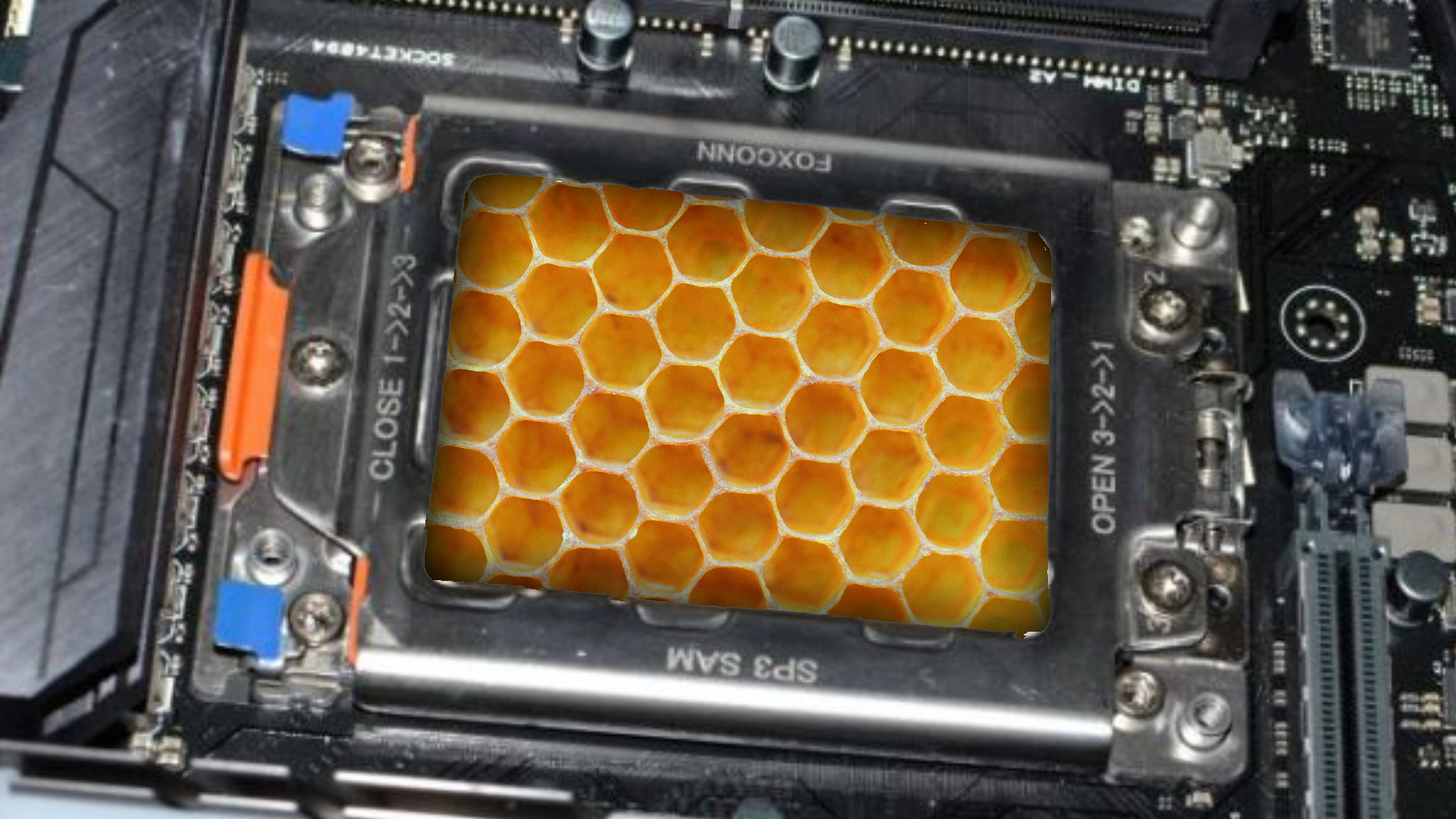Honey might be the key to cooler, more efficient, biodegradable chips
These chips might be the future of neuromorphic computing.

Honey could be the next material used to create brain-like computer chips. Its proven practicality marks another step toward creating efficient, renewable processors for neuromorphic computing systems, using biodegradable products.
Research engineers from WSU's School of Engineering and Computer Science, Feng Zhao and Brandon Sueoka, first processed honey into a solid. Then they jammed it between two electrodes, using a structure design similar to that of a human synapse. They're known as 'memristors,' and are proficient at learning and retaining information just like human neurons.
By mimicking the brain, these memristors can work more efficiently, processing and storing data using neuromorphic computing techniques.
Neuromorphic computing isn't a new thing. Both IBM and Intel have chips that make use of this brain-like structure, which has the potential to replace the von Neumann architecture in most of today's computer systems. And by designing these systems using honey, we're looking at a much more eco-friendly, efficient, and longer lasting solution than the non-renewable chips of today, which are made from toxic materials.
"Honey does not spoil," Zhao explains. "It has a very low moisture concentration, so bacteria cannot survive in it. This means these computer chips will be very stable and reliable for a very long time."
Not only does this solution to neuromorphic computing have the potential to run cooler and more efficiently than traditional chips, honey-based computer chips can be disposed of by simply dissolving them in water. This biodegradable approach would help reduce the 22 million tons (or more) of electronic waste piling up year-on-year.

Best DDR5 RAM: the latest and greatest
Best DDR4 RAM: affordable and fast
Currently each memristor is the size of a human hair, though Zhao's team plans to move from micro-scale down to nano-scale, making memristors 1/1000 that size. The team also has plans to check out the potential of aloe vera sugars and proteins for the same application.
Keep up to date with the most important stories and the best deals, as picked by the PC Gamer team.
So, it could be either honey or aloe vera inside future computer chips. Not something we saw coming, but it sounds like a pretty sweet solution to a more eco-friendly tech future... If this technology can make it out of the lab, of course.

Screw sports, Katie would rather watch Intel, AMD and Nvidia go at it. Having been obsessed with computers and graphics for three long decades, she took Game Art and Design up to Masters level at uni, and has been rambling about games, tech and science—rather sarcastically—for four years since. She can be found admiring technological advancements, scrambling for scintillating Raspberry Pi projects, preaching cybersecurity awareness, sighing over semiconductors, and gawping at the latest GPU upgrades. Right now she's waiting patiently for her chance to upload her consciousness into the cloud.

